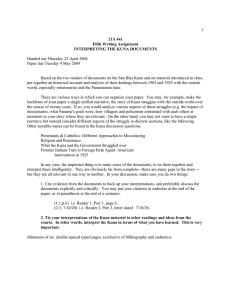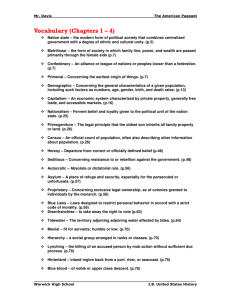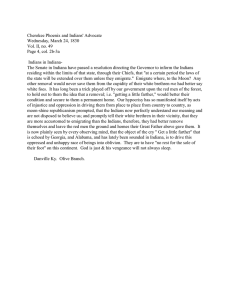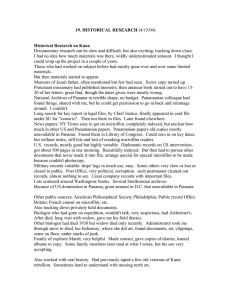21A.441 Study Questions: Kuna Documents
advertisement
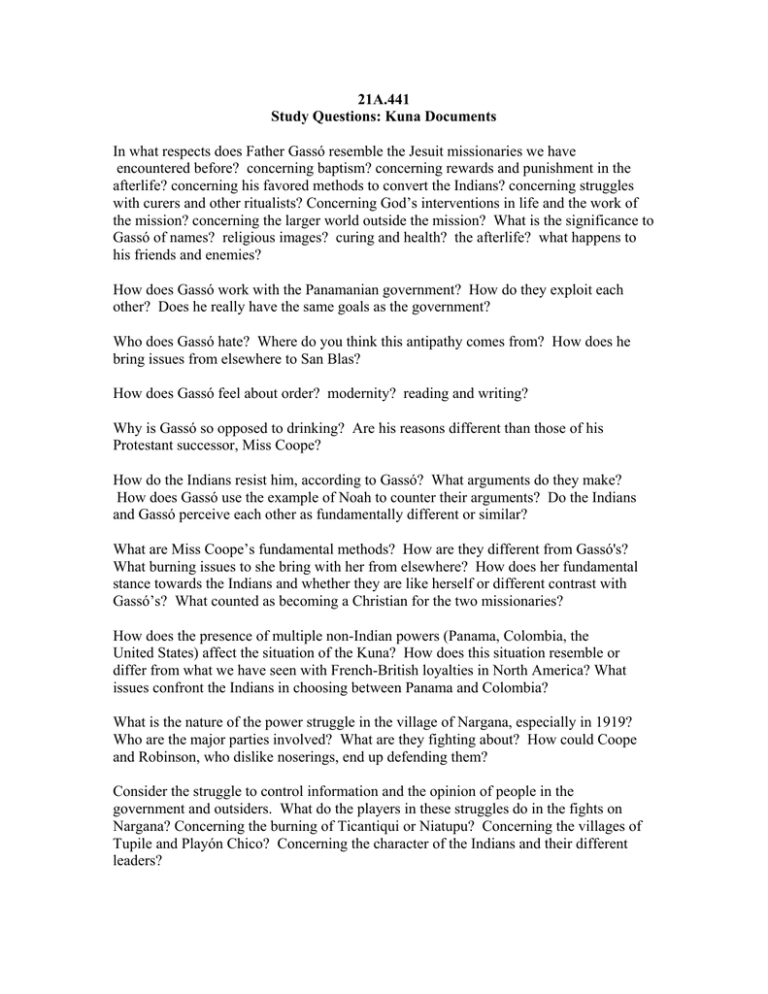
21A.441 Study Questions: Kuna Documents In what respects does Father Gassó resemble the Jesuit missionaries we have encountered before? concerning baptism? concerning rewards and punishment in the afterlife? concerning his favored methods to convert the Indians? concerning struggles with curers and other ritualists? Concerning God’s interventions in life and the work of the mission? concerning the larger world outside the mission? What is the significance to Gassó of names? religious images? curing and health? the afterlife? what happens to his friends and enemies? How does Gassó work with the Panamanian government? How do they exploit each other? Does he really have the same goals as the government? Who does Gassó hate? Where do you think this antipathy comes from? How does he bring issues from elsewhere to San Blas? How does Gassó feel about order? modernity? reading and writing? Why is Gassó so opposed to drinking? Are his reasons different than those of his Protestant successor, Miss Coope? How do the Indians resist him, according to Gassó? What arguments do they make? How does Gassó use the example of Noah to counter their arguments? Do the Indians and Gassó perceive each other as fundamentally different or similar? What are Miss Coope’s fundamental methods? How are they different from Gassó's? What burning issues to she bring with her from elsewhere? How does her fundamental stance towards the Indians and whether they are like herself or different contrast with Gassó’s? What counted as becoming a Christian for the two missionaries? How does the presence of multiple non-Indian powers (Panama, Colombia, the United States) affect the situation of the Kuna? How does this situation resemble or differ from what we have seen with French-British loyalties in North America? What issues confront the Indians in choosing between Panama and Colombia? What is the nature of the power struggle in the village of Nargana, especially in 1919? Who are the major parties involved? What are they fighting about? How could Coope and Robinson, who dislike noserings, end up defending them? Consider the struggle to control information and the opinion of people in the government and outsiders. What do the players in these struggles do in the fights on Nargana? Concerning the burning of Ticantiqui or Niatupu? Concerning the villages of Tupile and Playón Chico? Concerning the character of the Indians and their different leaders? Who else besides the government, the missionaries, and the Indians are involved in the struggle in San Blas? How do their goals and methods mesh with or clash with those of other actors? What are the government’s goals in San Blas and how are they different from those of Coope and Gassó? Why are government functionaries so interested in women’s dress and haircuts, dancing, schools, drinking? straight, wide streets? How do the police and bureaucrats try to subdue and control the Kuna? How do the Kuna resist? How do divisions among the Kuna weaken their cause? What is the role of poetry and dreams in their resistance? How do the Kuna rebel? What are the difficulties in organizing such a rebellion? Why do you think the United States gets drawn in? How does William Markham try to engineer things in their behalf? What is the importance of communicating a certain picture of the Indians and their cause?

